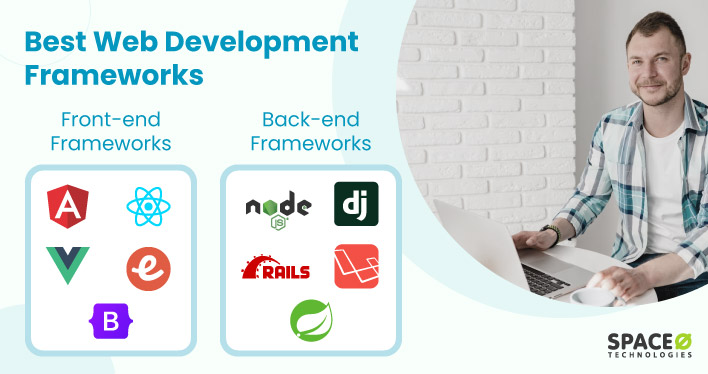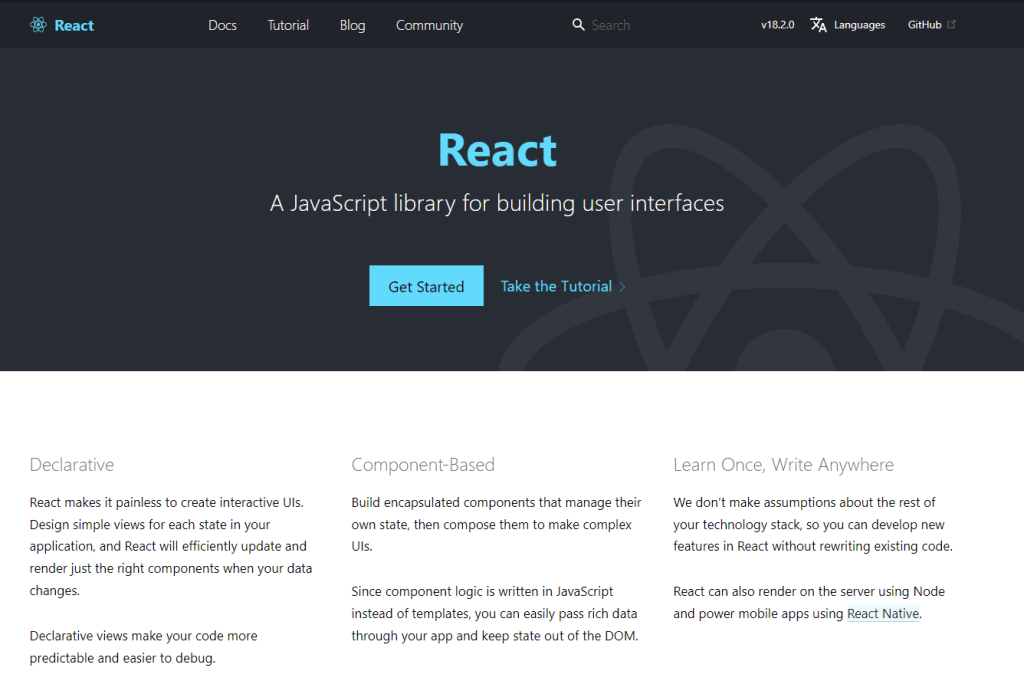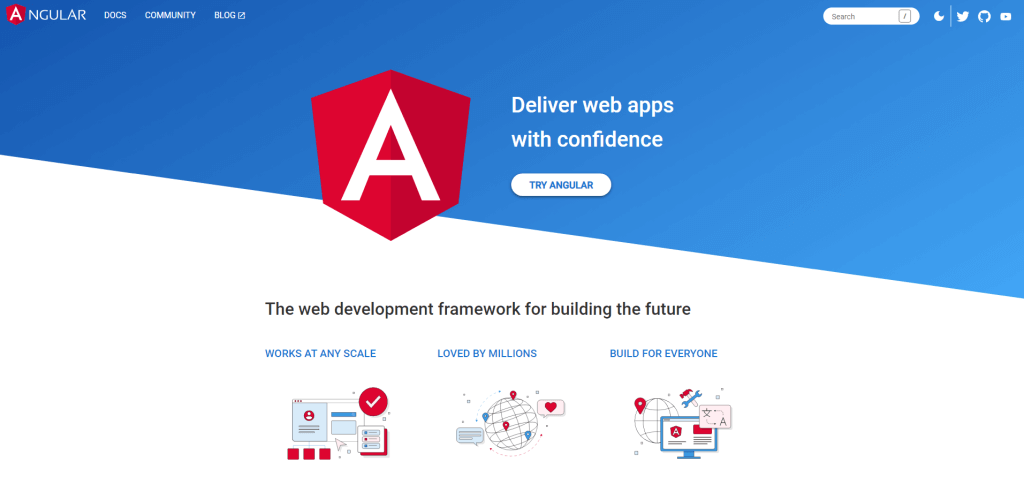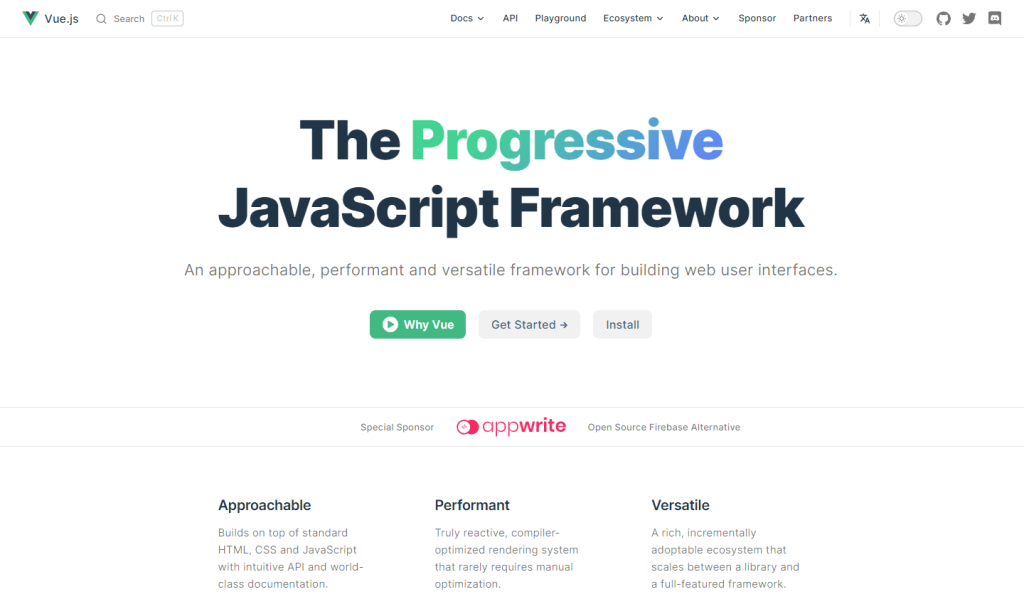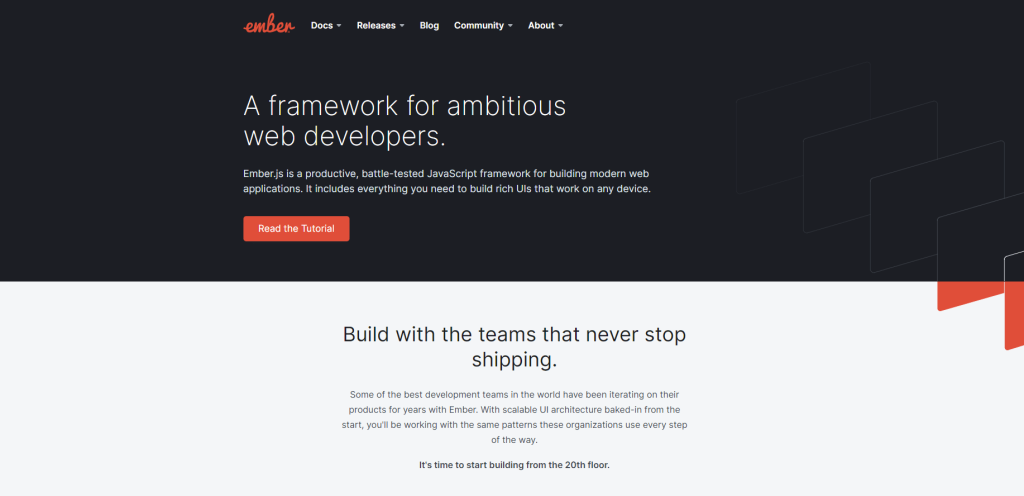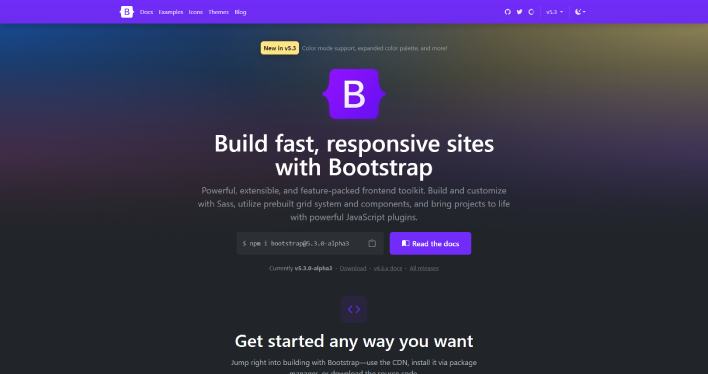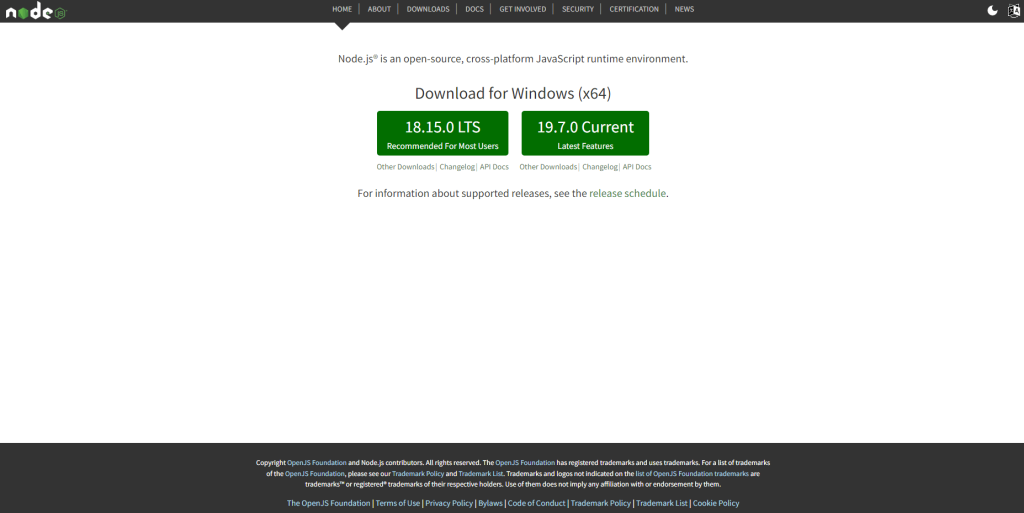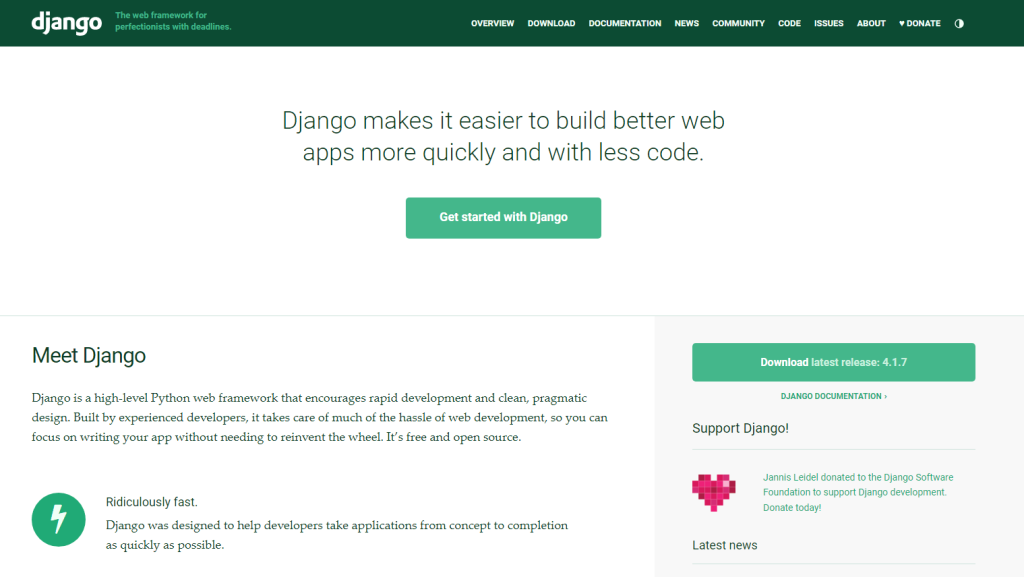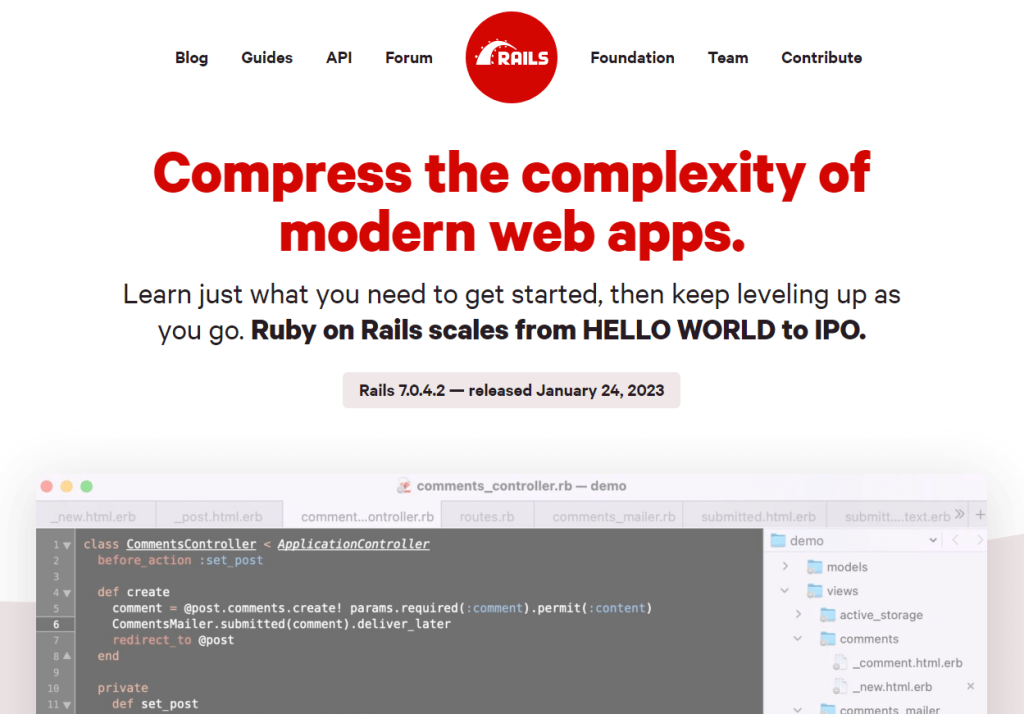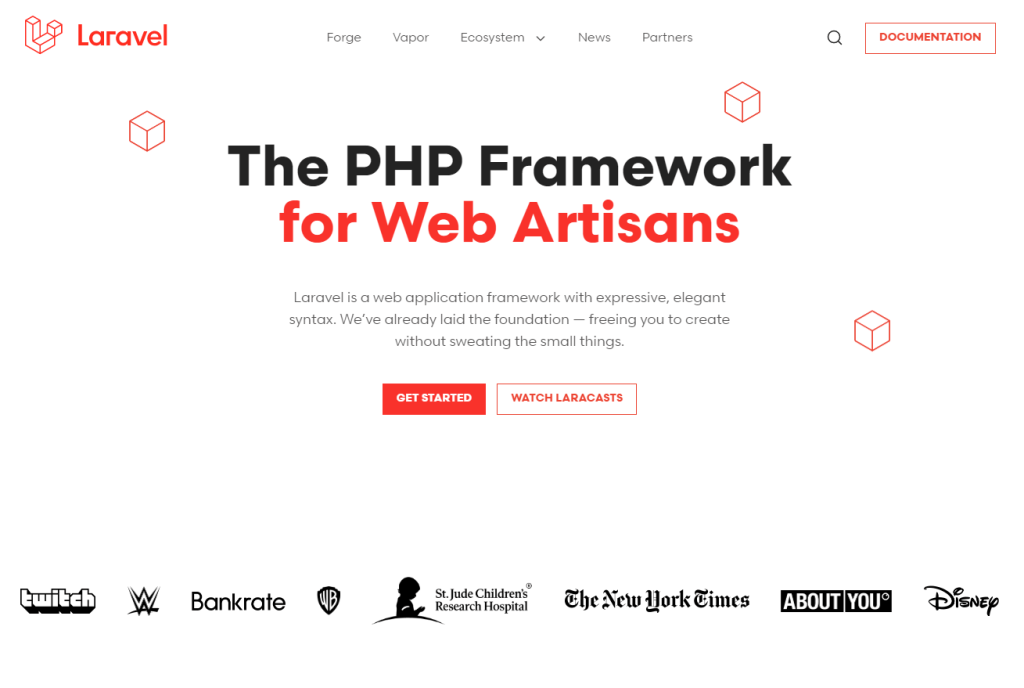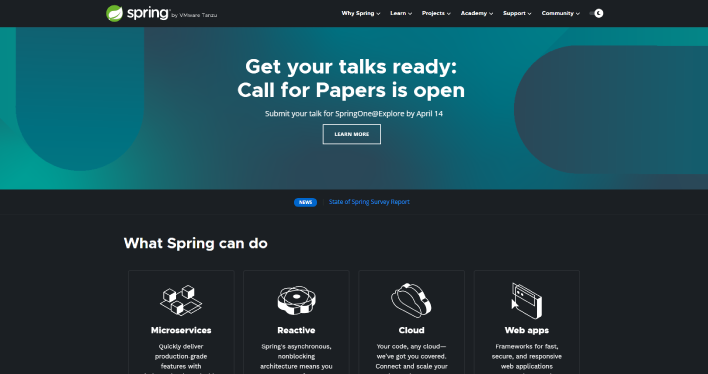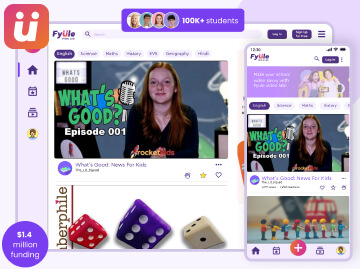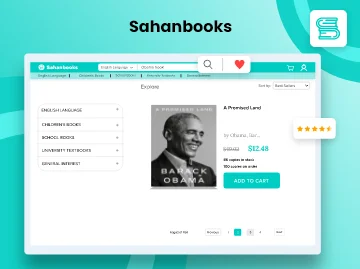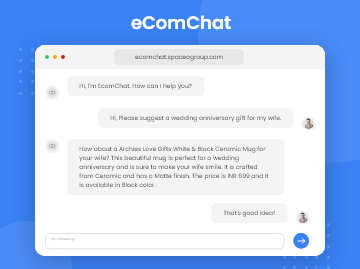- Explore the top 5 front-end web application frameworks such as React, Angular, and Vue.js to understand their unique features and benefits for your web development project.
- Consider the top back-end frameworks such as Node.js, Django, and Laravel to develop scalable and performant server-side applications.
- Learn when to use each framework and choose the most suitable front-end and back-end frameworks for your web development project to create a powerful and successful web application.
Key Takeaways
If you are looking for the best web app framework to use in 2025 for your web project, then you are at the right place.
According to recent data from Web Tech Survey, web frameworks are widely used, with a staggering 12,460,498 websites utilizing these web application frameworks to power their applications. With so many websites relying on web application frameworks, it’s clear that these tools are a crucial part of modern development.
Being a leading provider of web application development services in the USA, we have identified web development frameworks that are generally used in web development. In this blog, we will explore some of the most popular web frameworks (front-end and back-end frameworks) with their features and in which scenario you can choose the right framework for your project.
Whether you’re a seasoned developer or just getting started, this blog will provide you with valuable insights into the world of web application frameworks.
First, we will check 5 top front-end frameworks and then 5 top back-end frameworks for web development. Let’s dive in and explore the possibilities!
Contents
5 Front-end Development Frameworks for Web Development
To create a prototype and develop a solid responsive design, front-end web frameworks are crucial for you to use. Let us discuss the 5 best frontend development frameworks.
| Framework | Developer(s) | Latest Stable Version | Programming Language(s) | Famous App Developed |
|---|---|---|---|---|
 React React | 18.4.0 | JavaScript |
| |
 Angular Angular | 15.2.4 | TypeScript |
| |
 Vue.js Vue.js | Evan You | 3.2.31 | JavaScript |
|
 Ember.js Ember.js | Ember.js Core Team | 3.29.1 | JavaScript |
|
 Bootstrap Bootstrap | 5.3.3 | HTML, CSS, JavaScript |
|
Let’s check all 5 front-end frameworks in detail.
React – A Flexible and Efficient JavaScript Library for Building Complex User Interfaces

What is React?
React is a popular JavaScript frameworks for building user interfaces and is widely used for building single-page applications. It allows you to create reusable UI components and manage the state of their applications efficiently. React.js uses a declarative approach to building UIs, which means that you can describe how the UI should look and behave, and React.js takes care of the rest.
What are the Core Features of React?
Features of React Description Virtual DOM Uses a virtual representation of the DOM, which allows for efficient updates and faster rendering times. Component-based architecture Enables you to create reusable UI components and manage the state of their applications effectively. JSX Allows writing HTML-like code within their JavaScript files, making it easier to build UI components. Unidirectional data flow React.js uses a unidirectional data flow, where the data flows in one direction from parent components to child components. This helps to keep the application state manageable and makes it easier to debug. Server-side rendering Improves the initial loading time of applications and provides better SEO. Large ecosystem React.js has a large and active community, with many third-party libraries and tools available to help you build your applications. Performance optimizations Provide many performance optimizations, such as the ability to use pure components, memoization, and lazy loading, which improves the speed and responsiveness of applications. These are just some of the many features of React.js, which make it a popular and powerful library for building modern user interfaces.
When to Use React.js for Building Applications?
- React.js is well-suited for building single-page applications (SPAs) because of its efficient rendering and virtual DOM, which allow for fast and responsive UIs.
- React.js is a good choice for building large and complex applications because of its component-based architecture and unidirectional data flow, which make it easier to manage state and debug issues.
- If you need server-side rendering for better SEO and initial page load times, React.js is a great option because of its support for server-side rendering.
- If you need to build web and mobile applications, React.js can be used in combination with React Native to build cross-platform applications using a single codebase.
Want to Develop a Web App Using React?
Our React developers can create customized web apps using React.

Angular – An All-In-One JavaScript Framework for Modern Web Development

Angular is a JavaScript web framework that allows you to build dynamic, single-page web apps. Being a full-featured framework, Angular provides tools and features for every stage of the development process, from building user interfaces to testing and deployment.
Angular is maintained by Google and is built on top of TypeScript, a superset of JavaScript that adds additional features and functionality to the language. Known for its modular architecture, Angular easily breaks down applications into smaller and reusable components.
What are the Core Features of Angular Framework?
Features of Angular Framework Description Modular architecture Breaks down your applications into smaller, reusable components, making it easier to build and maintain large-scale applications. Two-way data binding Provides easy synchronization between the model and the view, making it simpler to manage the application’s state. Dependency injection Allows for easy management and sharing of dependencies across different components and services. Templating Provides a powerful templating system that allows developers to create dynamic and responsive user interfaces. Reactive programming Handles asynchronous events and manages data streams, leading to more efficient and scalable applications. TypeScript support Angular is built on top of TypeScript, a superset of JavaScript that adds additional features and functionality to the language, including strong typing and improved tooling. CLI tooling Provides a powerful command-line interface (CLI) tool that streamlines the development process and automates many common tasks, such as scaffolding, building, and testing. When to Use Angular Framework for Building Applications?
- If you’re looking to build a large-scale, complex web application with a lot of interactivity and dynamic content, Angular is an excellent choice due to its modular architecture, powerful data binding, templating features and the ability to develop scalable web applications.
- If you’re interested in building cross-platform applications that can run on multiple devices and environments, Angular’s support for web, mobile, and desktop platforms make it an attractive choice for your project.
- Angular’s comprehensive feature set, strong typing, and reactive programming capabilities make it well-suited for building enterprise-grade applications that require high performance, reliability, and scalability.
- Angular’s templating and data binding systems make it easy to create dynamic and responsive user interfaces that can handle complex data and interactions.
Vue.js- A Versatile JavaScript Framework for Building Interactive Web Applications

Vue.js is a lightweight JavaScript framework that is designed for building user interfaces and single-page applications. It provides powerful features that enable you to create web applications with ease.
Based on the Model-View-ViewModel (MVVM) architecture pattern, Vue.js allows developers to easily manage and manipulate the application state, making it ideal for building modern web apps. Vue.js offers a wide range of tools and libraries that simplify the process of building dynamic and responsive user interfaces.
What are the Core Features of Vue.js?
Features of Vue.js Description Declarative Rendering Uses a template-based syntax to declaratively render the DOM based on the application’s state. Component System Encapsulates UI functionality into reusable and composable components, making it easy to build and maintain complex user interfaces. Reactive Data Binding Changes to the application’s state are automatically propagated to the UI in a performant manner. Directives Provide a set of built-in directives that allow you to declaratively apply behaviors to elements in the UI. Transitions and Animations Powerful transition system that makes it easy to add animations and transitions to elements in the UI. Routing Build single-page applications with multiple views and complex navigation. State Management Easily integrates with state management libraries such as Vuex, which provides a centralized store for managing application state. Server-Side Rendering Used for server-side rendering (SSR), allowing for faster initial load times and improved search engine optimization (SEO) When to Use Vue.js Framework for Building Applications?
- If you are building a web application with complex user interfaces that require a lot of user interactions and updates, Vue.js can be a good choice.
- If you are building a single-page application (SPA) with a lot of dynamic content that needs to be updated quickly without reloading the page, consider using Vue.js.
- If you are building a progressive web application (PWA) that needs to work offline, Vue.js is the best due to its small size and efficient rendering.
- If you want to build a mobile application using web technologies, use Vue.js since it can be used with frameworks like Cordova or Capacitor.
- If you have a small to medium-sized project with tight deadlines, Vue.js is ideal since it has a low learning curve and allows for rapid development.
- If you want to build a reusable component library, use Vue.js as it has a powerful component system that allows for easy reuse and composition of components.
Ember – Best Framework for Code Organization, Testing, and Performance Optimization

What is Ember?
Ember is an open-source JavaScript framework for building web apps. It follows the Model-View-ViewModel (MVVM) architecture pattern and provides a set of conventions for organizing code, which helps developers write maintainable and consistent code.
What are the Core Features of Ember Framework?
Features of Ember Description Convention over Configuration Follows a “convention over configuration” approach, which provides a set of defaults and conventions for organizing code and building applications. This can help improve productivity and consistency among team members. Handlebars Templates Ember.js uses the Handlebars templating language to build user interfaces. Handlebars allow for the creation of reusable templates and provide a simple syntax for binding data to the UI. Routing Defines how the application responds to different URLs and user interactions. Components Build reusable UI elements that can be easily shared across the application. Ember CLI Provides a set of tools for scaffolding new projects, generating code, and running tests. Ember Data Ember Data is a data management library that integrates with backend APIs and makes it easy to retrieve, update, and persist data in the application. Computed Properties Defines computed properties that are derived from other data properties in the application. This can help simplify code and improves performance. Observers Ember.js includes a system for defining observers that can respond to changes in data properties and trigger actions in the application. Service Injection Ember.js provides a system for injecting services into components, which allows for more modular and flexible code. When to Use Ember Framework for Building Applications?
When to Use Ember Framework for Building Applications?
- If you are building a large-scale single-page application (SPA) with a lot of dynamic content and complex interactions between components, Ember.js provides a powerful framework for managing state, data, and user interface.
- If you are working with a team of developers and need a framework that provides a consistent structure and coding conventions, Ember.js can help ensure that everyone is on the same page and can work efficiently.
- If you need a robust system for handling client-side routing, Ember.js provides a comprehensive solution that allows you to define how your application responds to different URLs and user interactions.
- If you are working with a backend API and need a powerful data management library that can handle complex relationships between models and data, Ember Data provides a powerful toolset for managing data in your application.
- If you need a framework that comes with a rich set of tools and utilities for testing and debugging your application, Ember.js includes a comprehensive testing framework that makes it easy to write and run tests for your code.
Overall, if you are looking for a powerful and flexible framework for building complex web apps, Ember.js provides a comprehensive set of tools and features that can help you achieve your goals.
Bootstrap- Web Application Framework That Revolutionized Front-End Web Development

Bootstrap is a popular open-source front-end framework that provides a set of pre-designed HTML, CSS, and JavaScript components and utilities for building responsive and mobile-first web applications. Originally developed by Twitter, Bootstrap is now maintained by a community of developers and has become one of the most widely used frameworks for development.
Bootstrap includes a wide range of components and tools, such as typography, forms, buttons, navigation bars, modals, carousels, and much more, which can be easily customized and integrated into your web application. Overall, Bootstrap can help speed up the development process and improve the consistency and usability of your web application.
What are the Core Features of the Bootstrap framework?
Features of Bootstrap Framework Description Responsive Design Provides a responsive grid system and pre-designed components that can help developers create web applications that are optimized for different screen sizes and devices. Extensive Library of Components Includes a wide range of components and utilities, such as typography, forms, buttons, navigation bars, modals, carousels, and much more, that can be easily customized and integrated into your web application. Customizable Styles Customizes the look and feel of their web application by changing the default styles and colors of the components, or by creating their own custom CSS classes. JavaScript Plugins Include a collection of JavaScript plugins, such as dropdowns, modals, carousels, tooltips, and popovers, that can enhance the functionality of your web application without requiring any additional coding. Browser Compatibility Designed to work consistently across different browsers and platforms, ensuring that your web application looks and works the same for all users. Ease of Use Pre-designed components and utilities make it easy for developers to create high-quality web applications quickly and efficiently. Active Community Has a large and active community that contributes to the framework’s development, provides support and web resources and creates extensions and plugins that can further enhance its functionality. When to Use Bootstrap Framework for Building Applications?
- If you need to create a responsive web application, Bootstrap’s responsive grid system and pre-designed components make it easy to create web applications that adapt to different screen sizes and devices, without requiring additional coding or customizations.
- If you need to quickly create a prototype or minimum viable product (MVP) for your web application, Bootstrap’s pre-designed components and utilities can help you create a functional interface quickly and efficiently.
- If you want to ensure a consistent design, Bootstrap’s extensive library of components ensures that your web application has user experience across different pages and sections.
- If you’re a beginner web developer, Bootstrap is an excellent framework for beginner web developers who are still learning HTML, CSS, and JavaScript. Its pre-designed components and utilities can help new developers create high-quality web applications without requiring extensive coding knowledge.
- If you’re working under a tight deadline, Bootstrap can help speed up the development process by providing pre-designed components and utilities that can be easily integrated into your web application.
So far we have discussed the frontend development framework. But, you should also choose the best frameworks for backend development to complete the entire project.
Want to Hire Web App Developers?
Consult us today. We offer a flexible engagement model that includes hourly, full-time, and dedicated. Select any model and start developing web apps in 24 hours.
5 Back-end Frameworks for Web App Development
We have listed down the 5 best backend development frameworks for you.
| Framework | Developer(s) | Latest Stable Version | Programming Language(s) | Famous App Developed |
|---|---|---|---|---|
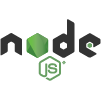 Node.js Node.js | Node.js project | 17.2.0 | JavaScript |
|
 Django Django | Django Software Foundation | 4.1.0 | Python |
|
 Ruby on Rails Ruby on Rails | Ruby on Rails Core Team | 7.0.0 | Ruby |
|
 Laravel Laravel | Taylor Otwell | 9.0.0 | PHP |
|
 Spring Spring | Pivotal Software, Inc. | 6.1.0 | Java, Kotlin |
|
Let’s understand each framework
Node.js – The Powerful Framework for Building Scalable Server-Side Applications with JavaScript

Node.js is an open-source, cross-platform, server-side JavaScript runtime environment that allows developers to build server-side applications using JavaScript. It uses an event-driven, non-blocking I/O model that makes it lightweight and efficient, ideal for building real-time, scalable, and high-performance applications.
Node.js was first released in 2009 and has since become a popular choice for web developers, as it allows them to write both the front-end and back-end of web applications using a single programming language – JavaScript. Node.js has a large and active community of developers and provides access to thousands of third-party libraries and packages through its package manager, npm. Some popular web application development examples built using Node.js include PayPal, LinkedIn, Netflix, and Uber.
What are the features of Node.js?
Features of Node.js Description Event-driven I/O Uses an event-driven, non-blocking I/O model that allows it to handle multiple requests simultaneously without getting blocked. This makes it lightweight and efficient, ideal for building real-time, scalable, and high-performance applications. Single-threaded but highly scalable Although Node.js is single-threaded, it can handle a large number of concurrent connections because it uses an event loop to process requests. This makes it suitable for building applications that require high scalability and real-time communication. Cross-platform Node.js is a cross-platform runtime environment that can run on Windows, macOS, and Linux, making it a popular choice for building applications that need to run on multiple operating systems. NPM Node.js has a built-in package manager, NPM, that provides access to thousands of third-party libraries and modules that can be easily integrated into a project. This saves developers time and effort by eliminating the need to write code from scratch. Full-stack JavaScript Node.js allows developers to use JavaScript for both the front-end and back-end of an application, making it easier to build and maintain a full-stack application using a single programming language. When to Use Node Framework for Building Applications?
- If you are building a real-time application that requires instant communication and data processing, Node.js would be a great choice.
- If you want to build a highly scalable and efficient application that can handle a large number of simultaneous connections, Node.js is a suitable framework.
- If you want to build a full-stack JavaScript application that can run both on the client side and server-side, Node.js development would be an appropriate choice.
- If you need a framework that is cross-platform and can run on multiple operating systems, Node.js is a good option.
- If you want to leverage the vast array of third-party modules and packages available through the Node Package Manager (NPM), Node.js would be an excellent choice.
- If you want to take advantage of Node.js’s event-driven and non-blocking I/O model, which enables high concurrency and scalability, Node.js would be a suitable framework to use.
Also, Checkout our detailed guide on Top Node.js Development Companies.
Django- A Comprehensive Python Framework for Web Development

Django is a high-level, open-source Python web framework that follows the Model-View-Controller (MVC) architectural pattern. It was first released in 2005 and has since become a popular choice for building web applications, especially those that require a robust and scalable backend.
Django provides a range of features and tools that simplify and streamline the process of building web applications, including an Object-Relational Mapping (ORM) system, a template engine, built-in support for user authentication, and a powerful administration interface. It also follows the Don’t Repeat Yourself (DRY) principle, which encourages developers to avoid writing redundant code. Django is used by a wide range of organizations and building dynamic websites, including Instagram, Pinterest, Mozilla, and the Washington Post.
What are the Core Features of Django Framework?
Features of Django Framework Description Model-View-Controller (MVC) Architecture Django follows the MVC architectural pattern, which separates the application logic into three components: models (data), views (presentation), and controllers (user input). This makes it easier to maintain and modify the codebase. Object-Relational Mapping (ORM) Works with a database using Python code rather than SQL. This simplifies the process of working with databases and reduces the likelihood of errors. Built-in Admin Interface Provides a powerful and customizable administration interface that allows developers to manage the application’s data and content without writing any code. This saves time and effort and makes it easier to manage and maintain the application. Template Engine Creates HTML templates for their web pages and dynamically populates them with data from the database. This makes it easier to create dynamic and responsive web pages without writing complex JavaScript code. URL Routing Maps URLs to views (functions or methods) that generate responses. This makes it easier to manage the application’s URLs and to create dynamic and flexible URLs. When to Use Django Framework for Building Applications?
- If you need to build a web application quickly and efficiently, Django is a great choice due to its ease of use and built-in features.
- If you are building a complex web application that requires a robust backend, Django is a suitable framework due to its scalability and support for multiple databases.
- If you need to create an administration interface for your web application, Django’s built-in admin interface can save you a lot of time and effort.
- If you want to create a website or web application that is highly customizable and can be extended easily, Django’s flexible architecture makes it a good option.
- If you want to build a web application that is secure and protected against common web vulnerabilities, Django’s built-in security features can help you achieve this.
- If you are building a web application that requires data modeling and database management, Django’s Object-Relational Mapping (ORM) system can simplify the process and reduce errors.
- If you are working with Python and want to leverage your existing knowledge and skills, Django is a natural choice due to its Pythonic syntax and structure.
Want to Develop a Back-end of Your Project?
Contact us. We have backend developers who can develop complex backends as per your custom business requirements.
Ruby on Rails – Streamlines Web Development Workflow

Ruby on Rails, commonly known as just “Rails”, is a web application framework written in the Ruby programming language. It was created in 2004 by David Heinemeier Hansson and has since gained popularity among developers due to its convention-over-configuration approach, which emphasizes developer productivity and reduces the need for tedious, repetitive coding tasks.
RoR is open-source and free to use, and it provides a set of tools and libraries for building web applications quickly and efficiently. Rails are suitable for building a wide range of web applications, from simple blogs to complex e-commerce sites. Its scalability and flexibility make it a good choice for projects that may grow over time.
What are the Core Features of Ruby on Rails?
Features of RoR Description Active Record ORM Provides a simple and intuitive interface for interacting with databases, including support for associations and validations Scaffolding Generates basic CRUD (create, read, update, delete) functionality for database tables Built-in testing framework Includes tools for unit testing, integration testing, and functional testing Asset pipeline Allows for easy management and preprocessing of assets like JavaScript and CSS files, improving page load times and reducing server load RESTful routing Provides a simple and consistent way to define routes for a web application’s resources, making it easy to follow best practices for building RESTful Web APIs Action Cable A framework for building real-time features like chat rooms and notifications, using websockets to provide bidirectional communication between the client and server Internationalization (i18n) support Includes built-in tools for managing translations of an application’s text content into multiple programming languages Modularity Provides a modular web app architecture that allows developers to easily extract reusable components, making it easier to share code between applications When to Use Ruby on Rails for Web Development?
- If you are building a web application that needs to be developed quickly and efficiently, RoR can be a great choice due to its convention over configuration approach, built-in tools, and ease of use.
- If you are working on a project with a limited budget, RoR can be a cost-effective option because it is an open-source framework and has a large community of developers, which means you can find many free resources and third-party plugins to help you get the job done.
- If you are building an application that requires a lot of data processing or interaction with databases, RoR’s Active Record ORM and MVC architecture can make it easy to manage and manipulate data.
- If you want to build a scalable application, RoR can be a good choice because it allows for easy horizontal and vertical scaling, and can handle high levels of traffic.
- If you want to build a modern web application that includes real-time features like chat or notifications, RoR’s Action Cable software framework can provide an easy way to implement these features using web sockets.
- If you are building an application that needs to be highly secure, RoR includes built-in security features like CSRF protection and secure password storage and has a large community of developers who actively work to improve security measures.
- If you are building a multilingual application, RoR’s built-in i18n support makes it easy to manage translations of text content into multiple languages.
- If you want to build a prototype or minimum viable product (MVP) quickly, RoR’s scaffolding and other built-in features can help you get a functional prototype up and running in a short amount of time.
Laravel – The Open-Source Framework That Makes PHP Development Easy

What is Laravel?
Laravel is a PHP web application framework that was created to help developers build high-quality web applications quickly and easily. It was first released in 2011 and has since become one of the most popular PHP server-side frameworks, with a large and active community of developers.
Applications built using Laravel utilize the MVC architecture pattern. This means that developers can separate the different components of their application into distinct layers, which can make the application easier to manage and maintain. Laravel also uses a number of other design patterns and principles, such as dependency injection, inversion of control, and active record, to make it more modular and flexible.
What are the Core Features of Laravel?
Features of Laravel Description Blade templating engine Powerful templating engine for creating and reusing templates for views Eloquent ORM Built-in ORM for working with databases and models Artisan CLI Command-line interface for generating boilerplate code, running tests, and performing other common tasks Routing Robust routing system for defining the URLs and actions of your application Middleware Middleware system for handling requests and responses at various points in the request lifecycle Authentication Built-in authentication system for adding user registration, login, and password reset functionality to your application Authorization Robust user authorization system for controlling access to different parts of your application Task scheduling Built-in task scheduling system for automating repetitive tasks Queueing Queueing system for handling long-running tasks in the background Events and listeners Event-driven programming model for building loosely coupled and scalable applications Redis integration Built-in support for integrating with Redis, a popular in-memory data store File storage Built-in support for local and cloud-based file storage, including Amazon S3 and Rackspace Cloud Files When to Use Laravel for Web Development?
- If you want to develop your application quickly
- If you want to use modern web development techniques such as RESTful routing, MVC architecture, and object-oriented programming
- If you want to work with a large and active developer community that contributes to the framework and creates a wide range of packages and extensions
- If you want to build a scalable and maintainable application, as Laravel includes features like built-in support for database migrations, a robust ORM for working with databases and models, and a task scheduling system for automating repetitive tasks
- If you want to build an application that is secure, Laravel includes robust security features like encryption and protection against common web attacks
- If you want to build an application that is customizable, as Laravel allows for easy customization of various components like authentication and routing
- If you want to build an application that is easily testable and supports automated testing and continuous integration. Laravel includes built-in testing tools that can help you achieve this
- If you want to build an application that is easily maintainable and extendable, as Laravel follows the SOLID principles and allows for easy extension of its functionality through packages and extensions
Find curated list of the top Laravel development companies , along with a brief overview of their expertise, key services.
Spring Framework – The Best Framework that Simplifies Web Development

What is Spring Framework?
Spring Framework is a popular and widely used open-source Java framework for building robust and scalable enterprise applications. It was first released in 2002 and has since evolved into a comprehensive and modular framework that provides a wide range of features and tools for building Java-based applications.
What are the Core Features of Spring Framework?
Features of Spring Framework Description Dependency Injection (DI) Enables loose coupling between components in an application by allowing the framework to manage object creation and wiring of dependencies. This leads to more maintainable and scalable code. Aspect-Oriented Programming (AOP) Enables the modularization of cross-cutting concerns such as logging, security, and transaction management. This results in cleaner and more modular code. JDBC Abstraction Provides a simplified JDBC API for database operations, reducing boilerplate code and enabling better exception handling. Transaction Management Provides consistent and declarative transaction management across different data access technologies, ensuring data integrity and consistency. MVC Web Application Development Provides a robust and flexible web application development framework based on the Model-View-Controller (MVC) architecture, enabling developers to build scalable and maintainable web applications. Integration with Other Libraries Provides seamless integration with other popular libraries and frameworks such as Hibernate, JPA, and Quartz. Caching Provides caching support for improving application performance and scalability. Messaging Provides support for messaging-based architectures through integration with message brokers such as RabbitMQ and Apache Kafka. When to Use Spring Framework for Web Development?
- When you need to build a large-scale application that requires a modular architecture to handle complex business logic.
- When you need to integrate multiple technologies and frameworks within your application, such as database access, messaging, and web services.
- When you need a scalable and maintainable application that can handle high traffic and large amounts of data.
- When you need to build a web application that follows the Model-View-Controller (MVC) architecture.
- When you need to build a secure application that requires authentication and authorization mechanisms.
- When you need to build a testable application that can be easily unit-tested and integration tested.
- When you need to build a high-performance application that requires caching mechanisms for improved performance.
Above we have discussed client-side frameworks that will help you to develop necessary functionalities in your web application. In the next section, we will talk about the most important questions asked about web development frameworks.
Frequently Asked Questions About Web Development Frameworks
Why use a web development framework?
Using a web development framework provides many benefits such as
- Faster development time
- Improved code quality
- Reduced development costs.
It provides a structured approach to web application development, which ensures consistency and scalability in the application.
How to choose the right web development framework for web development
Choosing the right web development framework for your project depends on a variety of factors, including the type of application you are building, the size of the development team, your skillset, and the specific requirements of the project. It is important to evaluate the strengths and weaknesses of different frameworks and choose the one that best fits your needs.
How about using multiple frameworks in a single project?
While it is technically possible to use multiple frameworks in a single project, it is not recommended as it can lead to code complexity and maintenance issues. It is better to choose a single framework that best fits the requirements of the project and stick with it throughout the development process.
Build Your Own Web Application
In this guide, you have learned about the top front-end and back-end web development frameworks. Choosing the right framework for your project will depend on a number of factors, including the nature of your project, your team’s skills and expertise, and your specific goals and requirements.
Our experienced developers have experience in custom web development services and have built numerous web applications, some of which are listed below.
If you have a project idea and are not sure how to make it a reality, what is the exact roadmap, then get your free consultation from our web experts. Fill out the contact form. Let’s get in touch.
